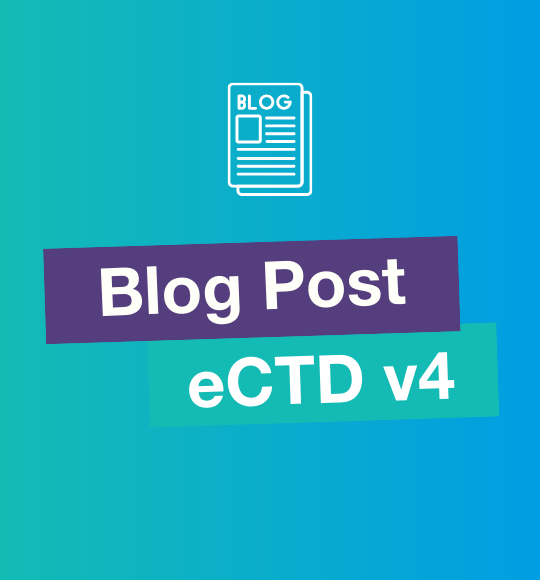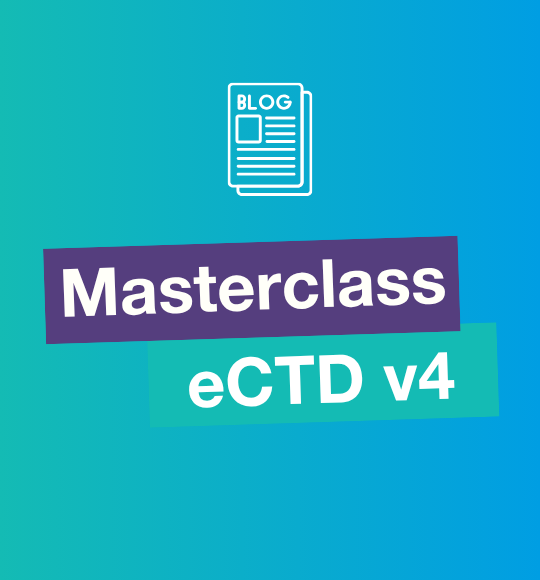The first time a client asked me about my company’s plan for eCTD 4.0 was back in 2007. Ten years later, we will need to follow through on my answer of “We are working through the specifications and will support eCTD 4.0 as it comes into use.” Implementation guides from the ICH, FDA, EMA, and PMDA (Japan) have all been drafted. While there are several new regulatory initiatives on the horizon, such as IDMP and Structured Content, the momentum for eCTD 4.0 is clearly pushing forward. However, each of the players has a slightly different motivation for eCTD 4.0 acceptance by the industry:
- Health Agencies: increasing review efficiency to ensure that they can meet their mandated timelines.
- eCTD tool vendors: reduce the number of new software releases (not to mention new sales!).
So what motivation is there for you, as a sponsor company, to move to eCTD 4.0?
What’s in it for you?
So what’s new in eCTD 4.0 for sponsor companies? Here are the most important changes from a sponsor perspective:
- Increased flexibility of the specification
- In eCTD 3.2, most changes to the sections, metadata, or value lists for an eCTD need to be changed as part of an updated specification. In eCTD 4.0, these can all be updated with changes to the various controlled vocabularies. As long as the tool can accommodate these vocabularies, there should be less need for software updates to accommodate changes from the agencies.
- Correcting Issues in the 3.2 Specifications
- Over the lifespan of eCTD 3.2, Health Authorities have encountered several issues with how the information is presented. eCTD 4.0 provides a way to correct these issues, such as document display order and metadata correction, in an easy process.
- Streamline Document Re-Use and Submission Grouping
- eCTD 3.2 had several ways to reuse the same content across different applications. Cross Application Referencing (CAR) and Submission Grouping were both ways to get around eCTD 3.2’s inherent limitations in cross-application communication. eCTD 4.0 is built from the ground up to allow these types of document re-use. Sponsors who have made extensive use of CAR and other document reuse options will find these functions much easier in eCTD 4.0.
- Harmonizing Study Tagging Files and Node Extensions into Document Groups
- Studies were handled differently in eCTD 3.2, depending on whether you submitted to the FDA or EMA/RoW. The FDA required Study Tagging Files (STFs) to be created for each study, while the EMA and other countries used node extensions. In eCTD 4.0, the approach is harmonized into Document Groups. Sponsors sending applications to multiple regions should now find reusing modules 4 and 5 to be significantly easier.
- Allow two-way communication between companies and agencies as part of the eCTD
- Previously, eCTD communication went only from the sponsor company to the agencies. With eCTD 4.0, agencies also have the opportunity to communicate back within the eCTD structure. Currently, only the FDA is including specifications on two-way communication as part of the initial implementation of eCTD 4.0.
When should I switch to eCTD 4.0?
Over the past two years, every US client I have worked with has asked the same question: “Should we switch to the newest FDA eCTD specification?” I have found that the answer is based on two other questions: 1.) Are you already submitting eCTDs? and 2.) Are you submitting Advertising and Promotional Materials to the FDA? Even for clients who have decided to upgrade to the newest version of the specifications on their own, we find that those questions correlate with their decision.
In our next blog, we will take a look at the timelines from various agencies for eCTD 4.0. While there will be a transition period to continue to submit eCTD 3.2 before eCTD 4.0 becomes mandatory, as a sponsor, you do not want to delay your transition to eCTD 4.0 for too long. We will discuss the tasks that are necessary from a technical perspective to transition to eCTD 4.0 in the third blog in our series. They will require planning and time, so companies that delay implementation until the specification becomes required may find they have issues with getting all of their submissions sent in time. The transition period puts sponsor companies in a similar situation to what we have seen with the newest FDA specifications. So as you decide when to upgrade your submissions from eCTD 3.2 to eCTD 4.0, what questions should you ask?
From my perspective, here are the four most important ones:
1. Have you needed to correct metadata on your submissions consistently?
2. Are you often re-using the same document content across different applications?
3. Are you planning new submissions for multiple regions? What are your plans for re-using the content?
4. How much communication are you doing with the FDA? Are you managing multiple Meeting Requests or Requests for Information/Advice at a time?
The more “yes’s” you have to the questions above, the more benefit you will see from eCTD 4.0. This may drive you to implement eCTD 4.0 sooner rather than later.
In our next blog post, we will help you to decode all of the information being presented about eCTD 4.0 with a dive into the terminology and concepts. In our third post, we will take a look at Health Agency timelines and implementation concerns.
In the meantime, you can contact EXTEDO with any questions about eCTD 4.0 and for help with your eCTD 4.0 planning or download our whitepaper: eCTD 4.0: Objectives, benefits & impact on life science organizations




.png)